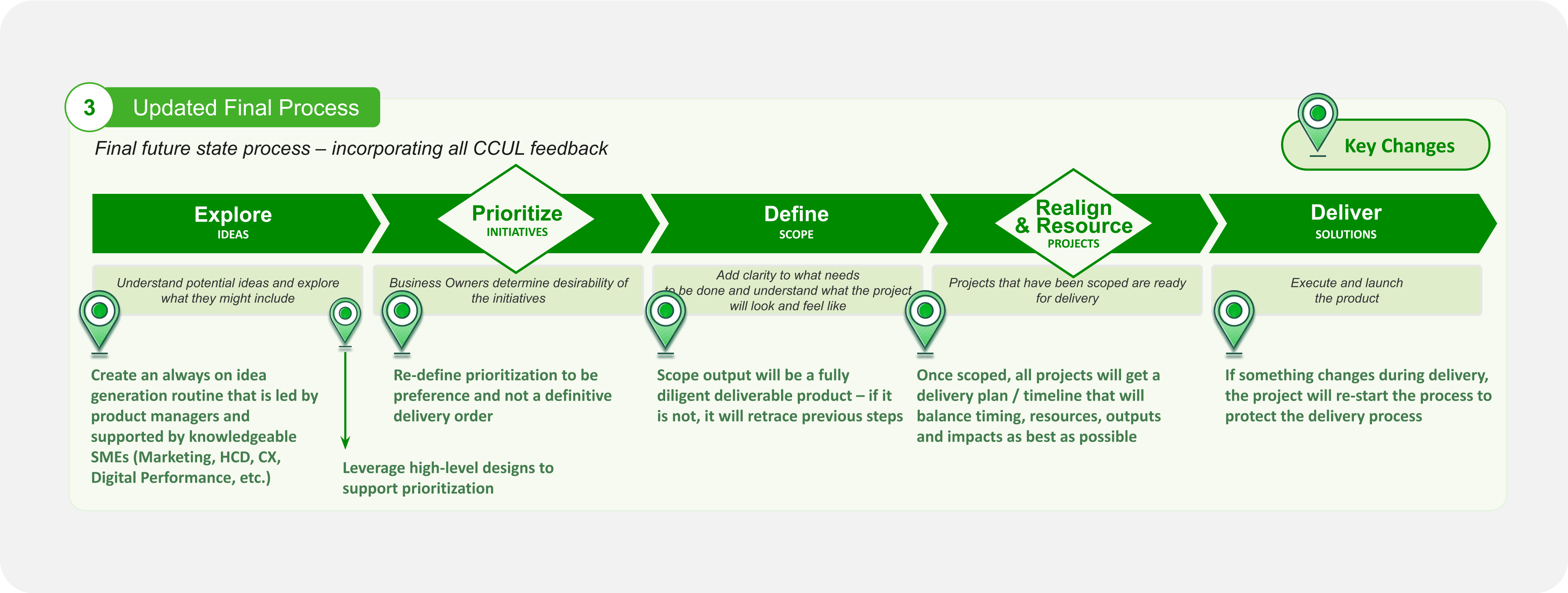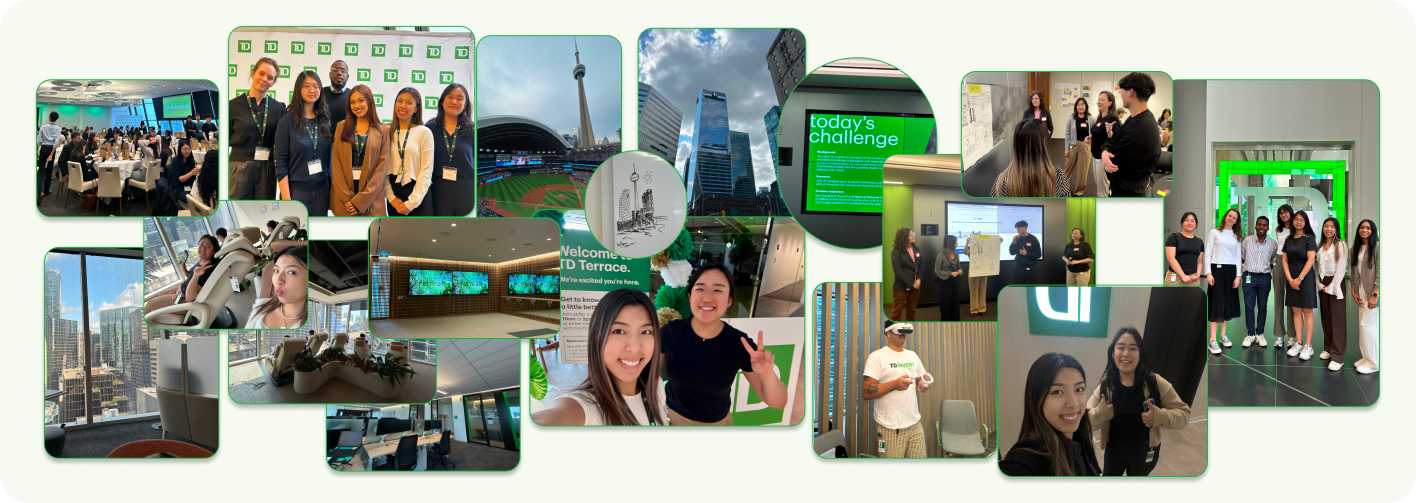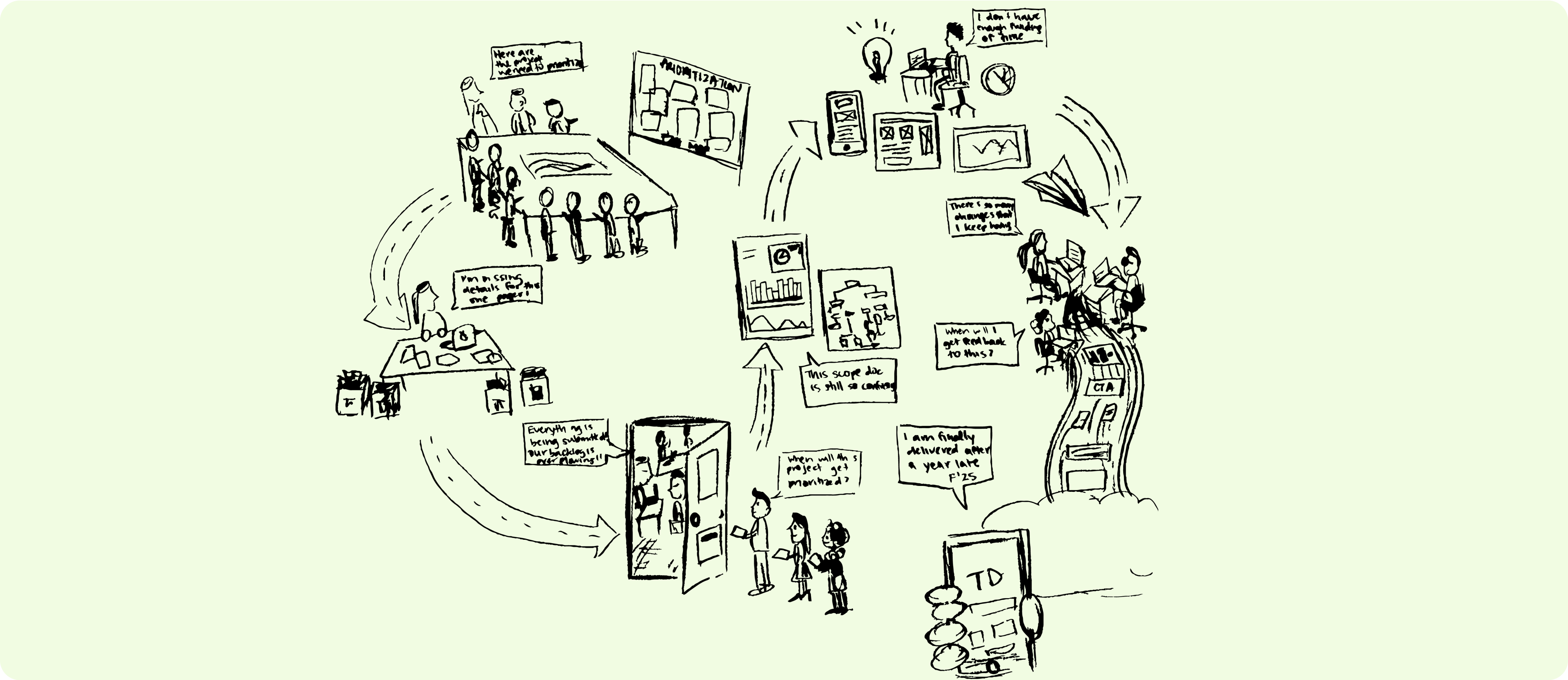
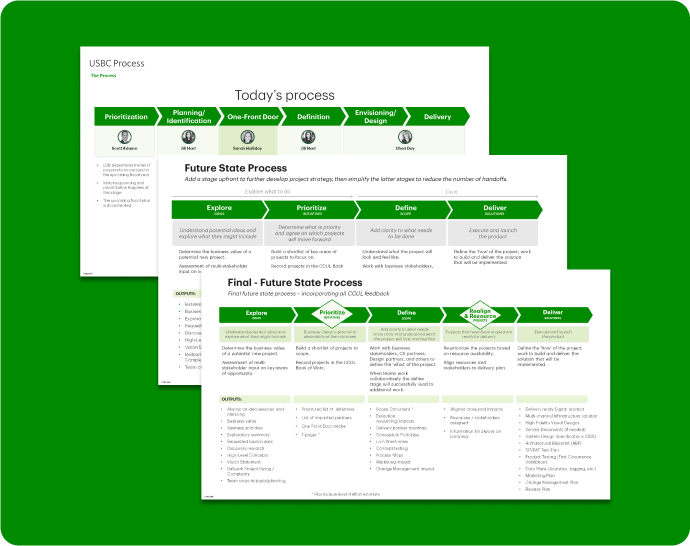
In this project, I collaborated with a Strategist, Product Owner, and Designer who provided valuable consultation and guidance throughout the process. While I independently carried out the design and research efforts, their insights helped shape key decisions and ensured alignment with the broader strategy and goals.

The current project delivery process begins with Prioritization, where the Line of Business (LOB) selects projects for the fiscal year. Next, during the Planning phase, input from stakeholders like LOB and SEAL is used to define the project scope. Projects are submitted through an Intake process, assessed by Risk, prioritized, and resourced. In the Definition phase, teams are assigned, and the project’s 'what' is clarified. The Envisioning/design phase follows, exploring the 'how' through ideation and user testing. Lastly, in the Delivery phase, designs are refined, development is completed, and features are tested and released.
Challenges exist, such as communication gaps and process inefficiencies, below are the most common gaps and challenges that were mentioned within the interviews that we conducted.
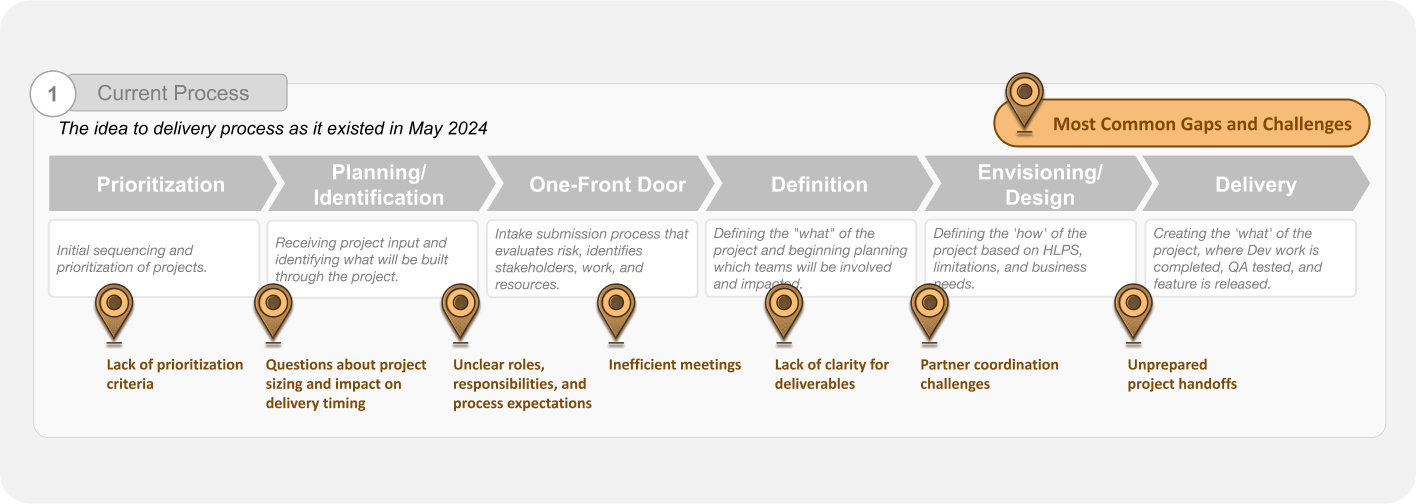

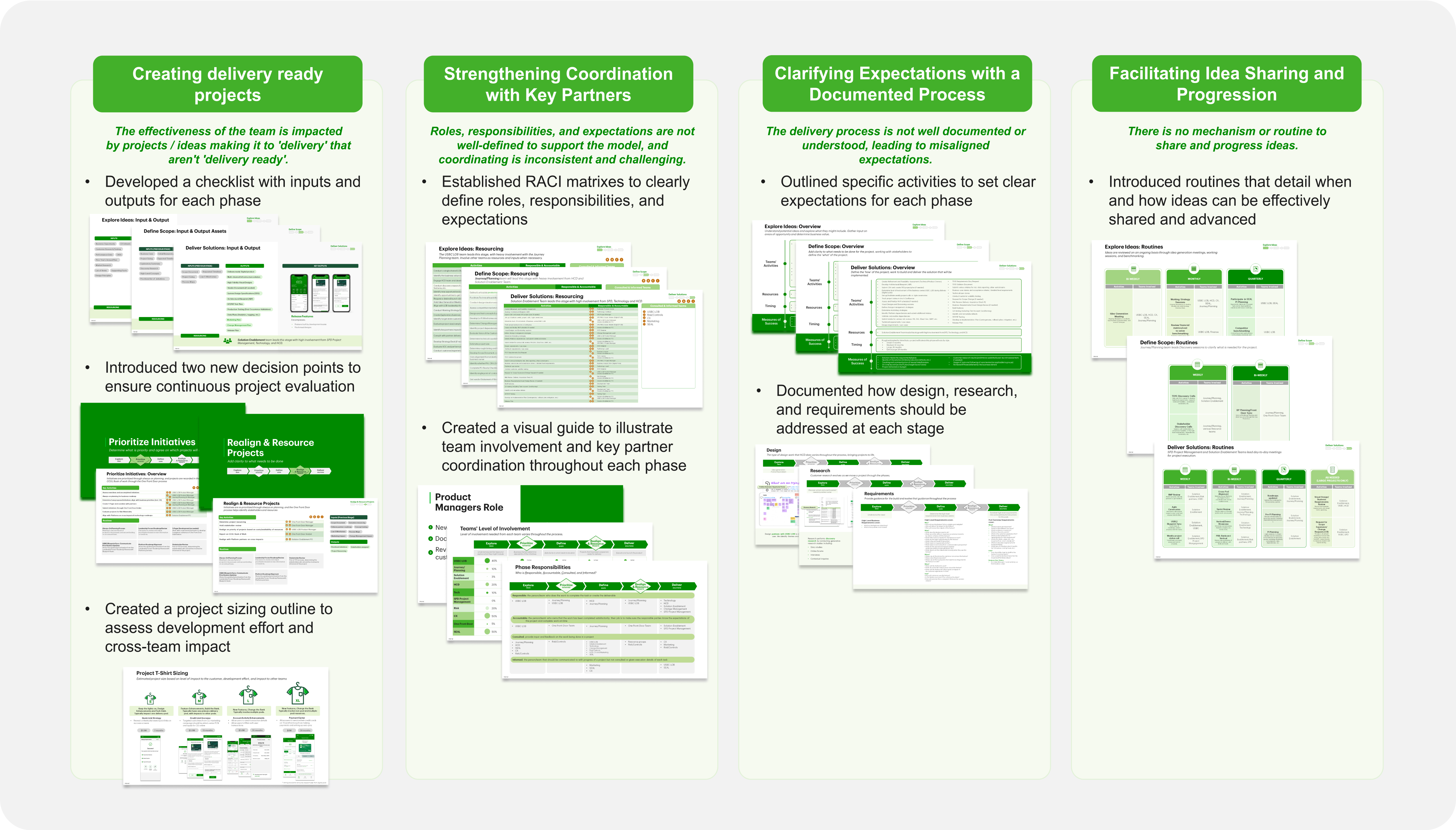
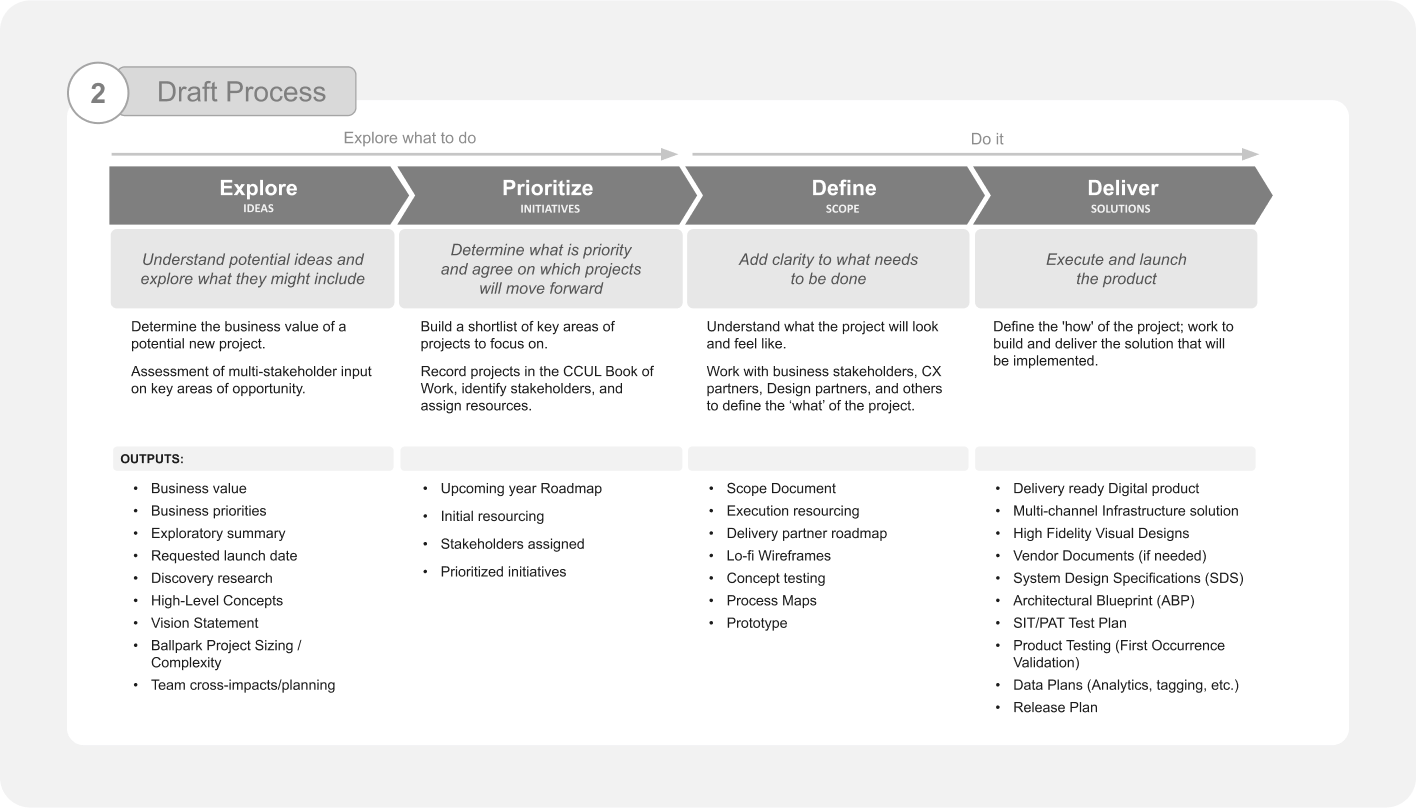
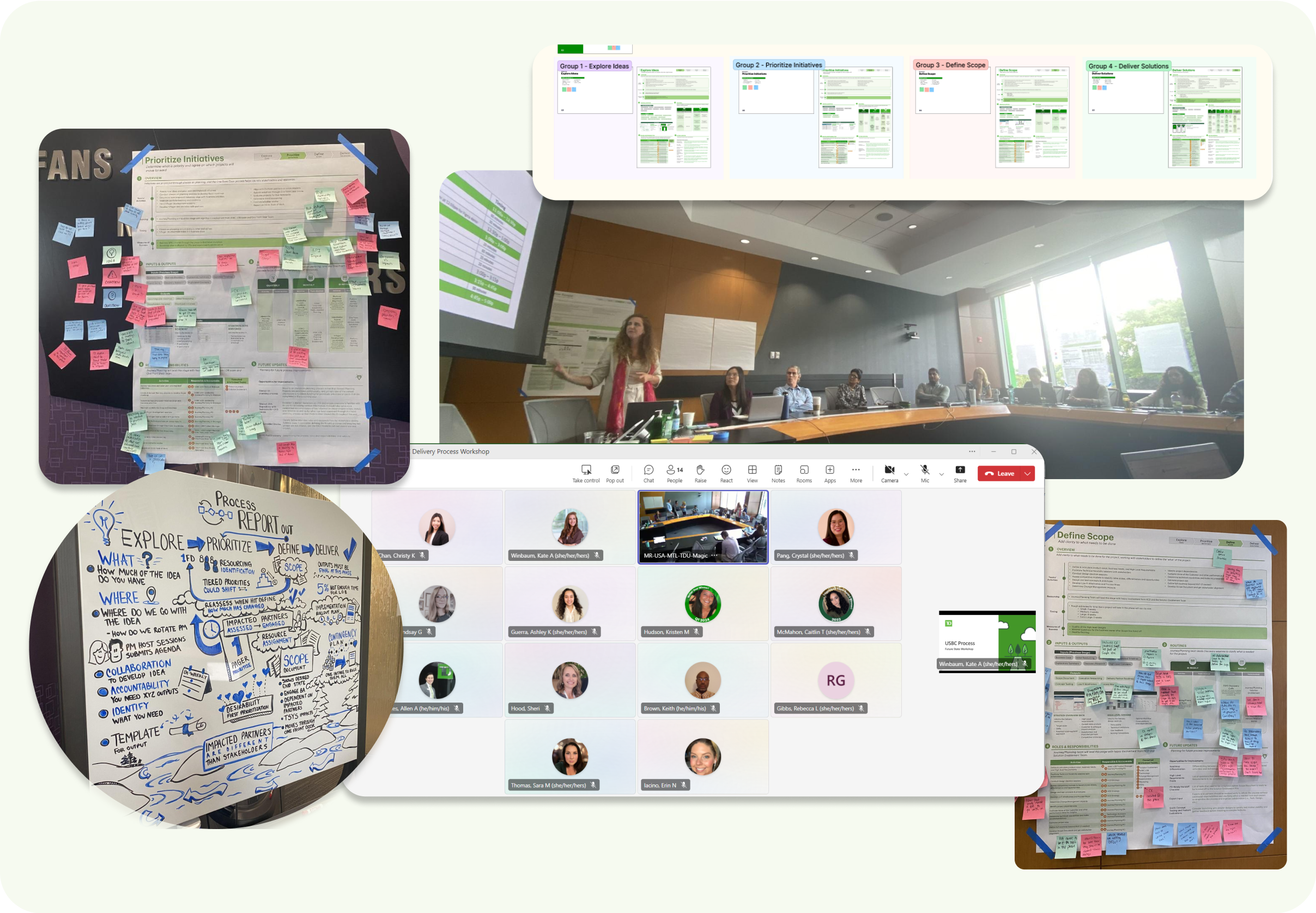
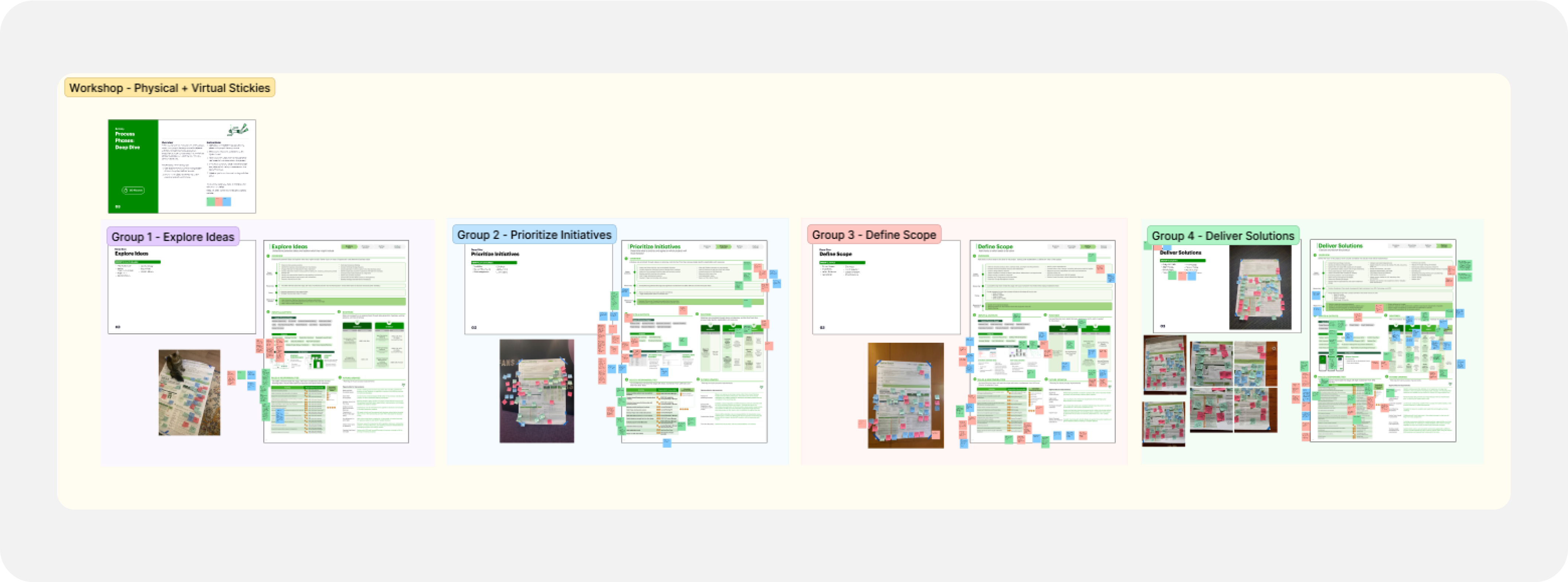
Each phase owner presented the emerging themes identified by their team during the Process Deep Dive. The objective was to share collective insights and concerns with the broader group, ensuring transparency and collaboration across phases.
Stakeholders reviewed all feedback, including sticky notes left by other participants, to identify gaps and brainstorm potential improvements for the future state. This was done collaboratively, with each stakeholder taking turns to share ideas and feedback.
As a facilitator, I gained key insights into how different teams viewed the process and their ideas for enhancing it. Watching people actively engage with the sticky notes and posters I helped design was incredibly rewarding—it felt like the insights we gathered were truly resonating with them.
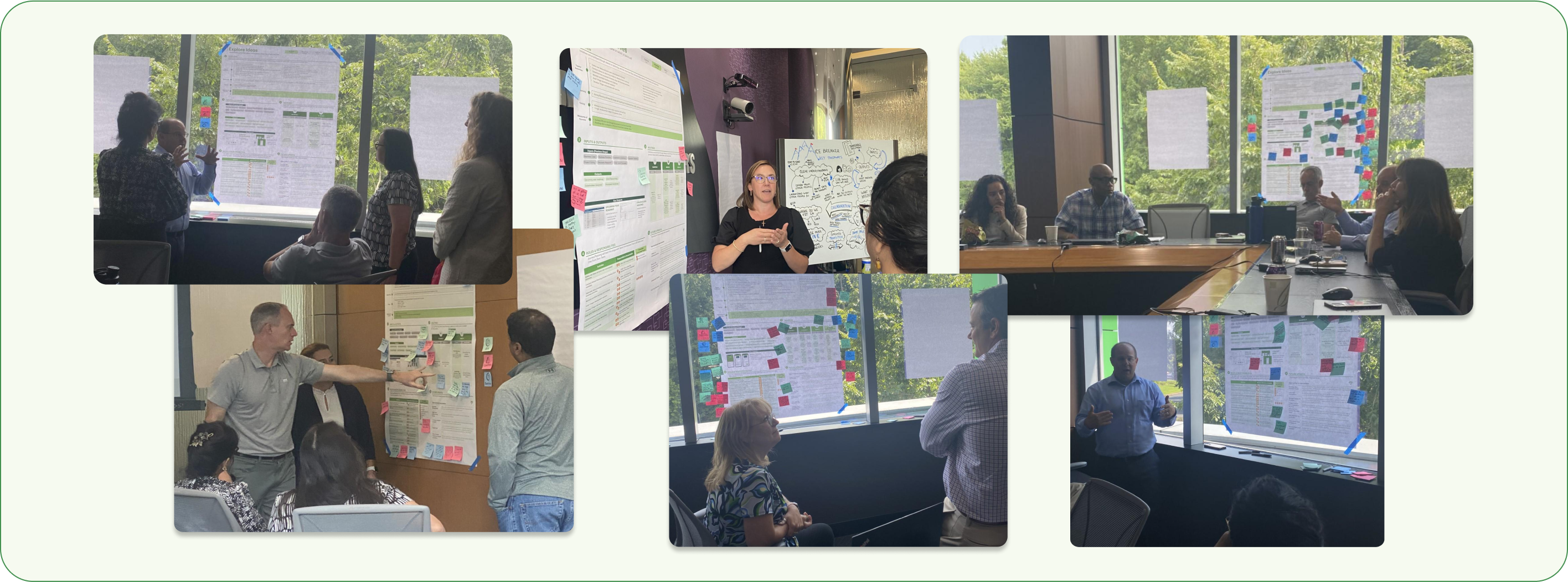
After the workshop, we gathered the insights and I was responsible for organizing all the sticky notes that represented various ideas, concerns, and questions.
I sorted them according to each phase of the process—Explore, Prioritize, Define, and Deliver. Once organized, I categorized them into broader themes and summarized key takeaways and critical questions for each phase. This helped us uncover significant insights, such as the importance of early stakeholder identification in the Explore phase, the need for clear prioritization not tied to delivery timelines, and the role of effective scoping before resources are assigned.
By synthesizing these insights, I provided my team with a clear direction for refining the process and ensuring that these considerations were addressed in our final service blueprint.

Through our work, we transformed the challenges we identified into tangible improvements that have now been integrated into the US Bankcards vertical. Key changes have been implemented, including two new decision points that allow stakeholders to re-define prioritization as a preference rather than a strict delivery order.
